May 11th 2022
FISH FARMING IN NIGERIA: 4 FACTS YOU SHOULD KNOW
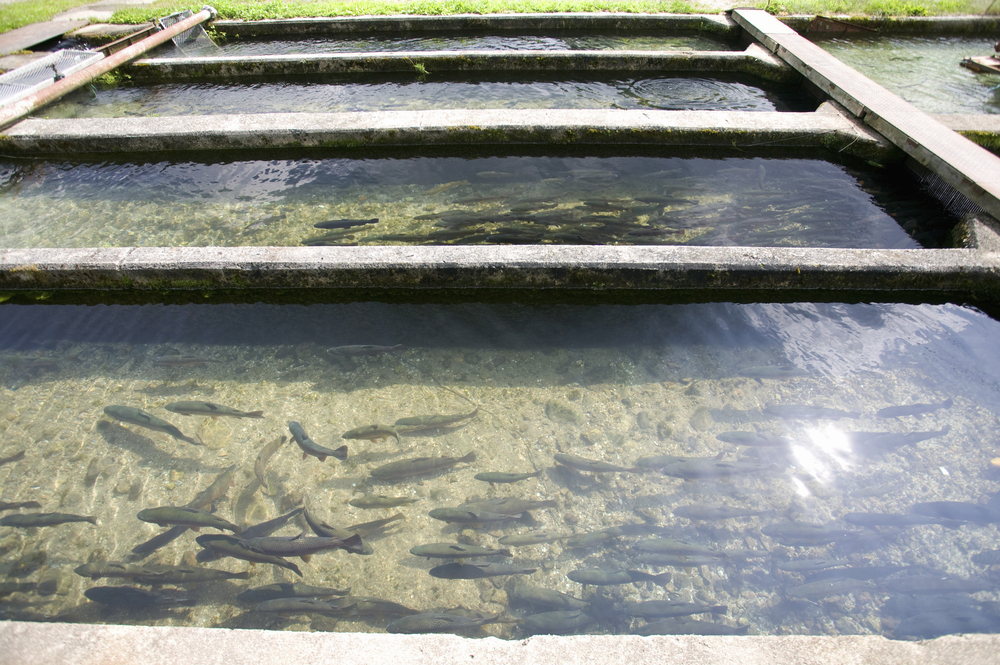
Fish farming is undoubtedly one of the most popular type of farming in Nigeria at the moment. Fish farming in Nigeria has gone beyond the traditional method of setting out into a river, stream, sea, ponds, or lakes to bait fish by either casting nets or fishing tackle (although this is still very much practiced). Nowadays, with the modern-day fishing farming methods in Nigeria, you can practice fish farming in your compound or with a water tank, provided you have the space.
Fish is an essential source of food in Nigeria; a visit to the typical Nigerian market will present you with various fishery products, from fresh live catfish in plastic buckets to frozen fish, roasted fish, dry fish, and many more. There is a massive market for fish farmers in Nigeria, depending on the type of fish farming you wish to specialise in.
Here are four facts that you should know about fish farming in Nigeria:
4 FACTS ABOUT FISH FARMING IN NIGERIA
- Domestic production only meets about 40% of the demand for fish.
- Catfish is the most farmed species.
- Nigeria is the 3rd largest producer of fish in Africa.
- The contribution of the fisheries sector to Nigeria’s GDP is 3.24%.
DOMESTIC PRODUCTION ONLY MEETS ABOUT 40% OF THE DEMAND FOR FISH.
According to data made available by the World Bank, Nigeria produced about 1,169,478 in 2018, which is about 40% of Nigeria’s total annual fish demand of about 3.4 million metric tons; the rest of 60% of demand is met through fish importation.
Considering this data, you must have guessed by now that there is a huge market for intending fish farmers in the country. In an interview with Premium Times news outlet, An aquaculture expert in Nigeria stated the need for Nigeria to raise 400,000 new fish farmers into the Nigerian aquaculture industry.
CATFISH IS THE MOST FARMED FISH SPECIES IN NIGERIA
The aquaculture sector involved in the breeding, rearing, and harvesting of fish in Nigeria grew in production from 21,700 tonnes in 1999 to 316,700 in 2015, which is an over 1,400% increase within 25 years. Despite this growth, catfish, which are typically grown in ponds and tanks, is the most farmed species in the country and is responsible for more than half of the aquaculture production.
The National President of Catfish Association of Nigeria (CAFAN), CHIEF Tayo Akingbolagun, in his statement at their 2016 annual general meeting, said that Nigeria produced over 370,000 metric tonnes of catfish.
NIGERIA IS THE 3RD LARGEST PRODUCER OF FISH IN AFRICA.
The world total fisheries report by the World Bank’s most recent data in 2018 showed that Nigeria is currently Africa’s 3rd largest producer of fish in Africa at 1,169,478 metric tons, with Egypt (1st) and Morocco (2nd) leading the continent at 1,934,743 and 1,387,815 metric tons respectively.
Nigeria’s household fish consumption per capita is 13.3kg annually, which is low compared to the world’s average, which is at 20.3kg per capita annually.
THE CONTRIBUTION OF THE FISHERIES SECTOR TO NIGERIA’S GDP IS 3.24%
According to the GDP data released by the National Bureau of Statistics (NBS) for Q1 2021, the fisheries sector had a 3.24% contribution to the country’s GDP. This was a positive indicator for the fisheries sector, which had a -3.60% and -2.07% growth contribution in Q4 and Q3 2020.
Despite having a 5.68% contribution in Q2 2020, its total contribution to the country’s GDP in the year 2020 was 0.26%.
MAY 9TH 2022

Marketing of Eggs and Poultry Meat
Marketing is one of the determinative factors for the success of a poultry business. It is of utmost importance to have a good insight into the marketing conditions before you start the poultry farming business. This can be obtained through preliminary market research followed by a study of market developments even as the business is in full operation. Marketing is more than just selling and marketing research is more than just collecting government statistics about production and consumption.
Supply and Demand Cycle
Both at the start and later on, it is necessary to know how supply and demand develop over a long period of time in the operating area where your poultry farming business is involved. As far as demand is concerned, population growth, especially buying power and disposable income developments, are determinative factors for assessing the marketing opportunities in the future.
The level and scale of production in a given area is seldom stable over a long period. First, climatic changes may affect productivity, either seasonally or incidentally e.g. sudden hot periods. However, in many cases economic factors are responsible for changes in the level and scale of production. Availability of feedstuff, and the level of feed prices, can fluctuate considerably.
On the other hand, the size of demand also changes or fluctuates in course of time. In this respect you must think of differences in availability and price level of alternative food protein sources such as fish and red meat, and seasonal changes in eating habits. Even in the absence of direct influences from outside, a cyclic pattern of prices can be observed. When the prices are high, many poultry producers will react by expanding their production. This in turn will cause a temporary overproduction leading to lowering of prices which eventually may go below the cost of production, a situation which will again make the producers decrease their output. As soon as the supply fails to meet the demand, the whole cycle repeats itself.
Once you understand how the market as a whole function, it would be advisable to find out how your products are doing in the market compared to those of a competitor, and also find out how to improve your own marketing arrangements.
Poultry Marketing Channels
There are two major poultry marketing channels:
- Direct sales to the consumers or to consumer centers such as hotels, restaurants and retail shops
- Marketing through middlemen (wholesale)
Generally, large poultry farming businesses are nearly found near urban populations centers, obviously because there is a ready market for eggs and meat. Consequently, feed manufacturing factories to are mostly found near these population centers.
Whichever marketing channel is chosen, there must be an adequate infrastructure to enable you to market your products in the most efficient way. Good roads and other means of communications are a necessity for effective transport and distribution of products to the markets.
Seasonal changes in supply and demand, and consequently in the price level, may partly be met by using storage and preservation facilities, but the costs of such facilities should not be underestimated.
Sales Promotions
The usual form of sales promotion consists of advertising and merchandising in order to draw the attention of the consumer to the products. In some cases, it may be wise to support the sales outlets by providing them with special storage equipment such as refrigerator and deep freezers. But the best way of promoting sales is by ensuring regular supply, excellent quality and an attractive presentation.
In order to maintain fairly constant supply throughout the year, it is necessary to plan thoroughly and be equipped to meet all unavoidable production disturbances. Some major fluctuations in level of production may be unavoidable, but climate control and hygiene measures must be of such a degree that climatic disturbances and serious outbreaks of diseases causing mortality and drop of production, can be prevented.

The products must be adapted to the needs and preferences of the consumers, both in quality and presentation. The time when eggs were sold in baskets filled with straw or in cardboard fillers, is definitely over. In modern large laying units, eggs are graded into size or weight classes and arranged in order to sort out cracked eggs and eggs with blood and meat spots. These quality graded eggs are sold in trays containing 30 egg, or in boxes with 360 eggs. Nowadays transparent plastic packs with 10 eggs or cardboard packs with 6 eggs are being used increasingly. Although the latter may cost more, they certainly meet the demands of the consumers, and therefore increase sales.
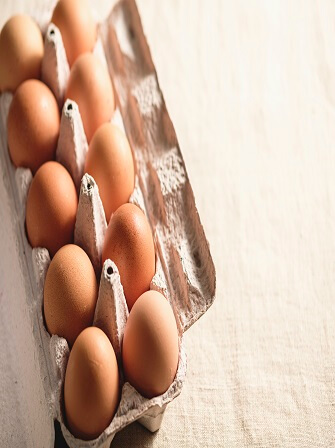
Apart from grading and packing, there might be other consumer preferences such as choice of brown eggs instead of white eggs or in the case of broilers, white colored skin instead of yellow. Of course, you must always cater to the customer preferences.
Above all the customer wants fresh and unspoiled products. Storage and packing are the most important factors in this respect. Eggs should be stored in a cold environment. In smaller shops storage conditions may be poor but an increasing number of retail shops, especially large supermarkets are giving more attention to suitable storage conditions. The eggs should not be stored too long, especially in hot climatic zones. Delivery therefore should take place at least once a week, if not more frequently.

Eggs from smaller units are often sold ungraded and unpacked to wholesalers. These middlemen transfer the eggs to retailers. Such a marketing situation is less favorable to the producers. When prices go up, a larger proportion of the profits may go to the wholesalers, whereas, when prices go down, a large part of the decline will be borne by the producers. Monopolistic situations in which a few traders may dominate the market should be prevented.
Marketing of Poultry Meat
In the poultry market, a choice must be made between marketing birds alive or slaughtered. Selling live broilers is of course a certain way of providing the customer with a fresh product and therefore this method of marketing is preferred in many countries. The consumer has the opportunity to choose the bird he or she prefers, and to take it away for slaughtering.
However, it is also a practice to let the birds to be slaughtered at the spot, under hygienic conditions. Official slaughter houses provide chilled fresh chicken meat, either as whole chicken or cut-up in portions (chicken parts) when this method is chosen, the way of packing is of great importance.
The wrapping should not only be attractive and colorful on the outside, but it must also contribute to the freshness and cleanness of the packet meat inside the package. A well-presented table bird has an obvious advantage in the market.
All poultry meat are potential carriers of micro-organisms. Thus microbial spoilage usually occurs in 4 to 10 days after slaughtering, depending on the way of handling the broilers at the processing plant and the type of micro-organisms involved. Even when the meat is kept at temperature from 0 to 4°C, microbial spoilage goes on, though at a slower rate. The storage temperature should be around 0°C or lower.
Wrapping in polyethylene bags does not hinder microbial spoilage because this material has high oxygen permeability. Impermeable wrapping would be better. Under these circumstances building of carbon dioxide (CO2) occurs, which inhibits the activity of the aerobe microflora, thus prolonging the good condition of the wrapped meat. Unfortunately, this wrapping material might be too expensive.
Adding value to the primary product will certainly contribute to an easier way of marketing. Fast food, cooked or fried chicken snacks can increase consumption and thus improve the market possibilities of chicken meat. It must always be kept in mind that the image of the product and of the producing company are determinative factors for your chances of success in the market.
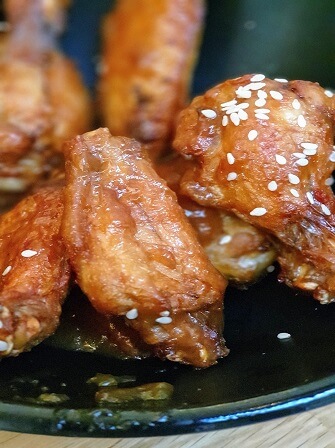
MAY 5TH 2022

Goat and Sheep Farming in Nigeria
Sheep and goats belong to the class of small ruminants while cattle are large ruminants because of their size. Sheep and goats have similar characteristics in terms of digestive system and other internal structures. However, there are some differences in their physical appearance and inherent behaviours. As farm animals, their production and management are similar.
Breeds of Sheep
Some breeds of sheep are specialized for wool production, some for meat and others for milk. Examples of breeds of sheep are Western African Dwarf, Yankasa, Balami, Uda or Ouda (brown or black in anterior, white in posterior part) and Navajo (Exotic), Togolese Vogan

Breeds of Goat
Breeds of goat are also specialized for wool production, meat and milk. Goat milk is laxative and good for people allergic to cow milk. Examples of goat breeds are Maradi or Sokoto Red goat, West AFrican dwarf goat, Kalahari goat (in South Africa), Sahel West African Long-legged goats (they are prone to trypanosomiasis and not good for milk), Nubian goat (large breed for meat and milk), Boran (breed of East Africa, late maturing, produces large litter size).
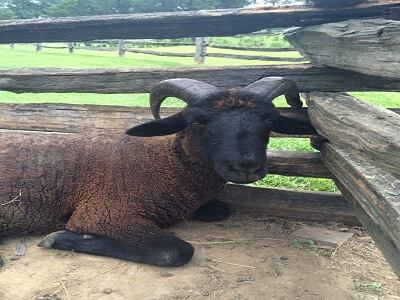
Other exotic breeds of goats are Saanem, Toggenburg, Alpine, Anglo-Nubian, Oberhasli, Pygmy goat, Alpine etc.

Housing for Goat and Sheep
There are five principal reasons why housing should be provided for small ruminants. The housing requirement is for lodging, feeding, water accesibility, healthcare and exercise. The shelter for sheep and goat should be simple and should provide protection and a place to rest, ruminate, sleep and possibly parturate, if parturition will occur during periods of inclement weather.
An existing or abandoned building can be restructured to house the animals. Three-sided shelters work well in many areas. Greenhouses, hoop, houses, shade structures and poly hutches may offer low-cost alternatives to traditional housing.
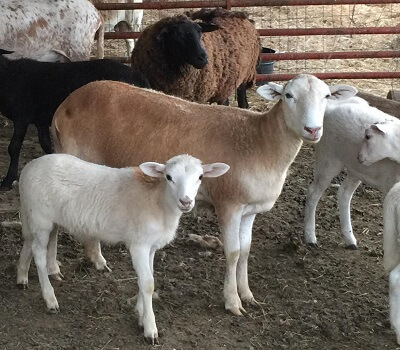
Fencing is paramount in small ruminant production as they are ubiquitous animals. Fencing for sheep and goat production is capital intensive but can be achieved moderately. The main essence of fencing is to accomplish two goals: Keeping the animals in and keeping predators out. Goats and sheep can fall prey to free range dogs and snakes. High fencing is considered to be the best type of fencing for all classes of livestock. Woven wire fences are popular with many small ruminant producers, but their cost is much higher. Live fencing is also adequate and can also serve as browse trees for the animals. This is a common method of fencing in developing countries, especially in backyard sheep and goat farming.
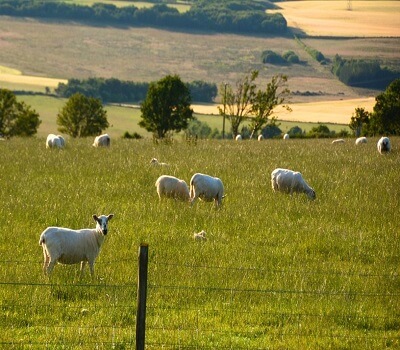
Breeding and Reproduction
The normal breeding season for small ruminant animals is August to March, though some people will cycle at other times during the year. Goats and sheep are seasonal breeders. The heat (estrus) period averages 21 days. The doe (female goat) and ewe (female sheep) will be in standing heat i.e. receptive to the buck (male goat) or ram (male sheep) for 12 to 48 hours. Ovulation (egg release) occurs 24 to 36 hours after the onset of heat.
The gestation lenght of the small ruminants is approximately 150 days. They typically give birth to one, two or three kids. Quadruplets are possible but uncommon. Ewe and doe should be made to lamb (the name or terminology for the act of giving birth by sheep) and kid(the name or terminology for the act of giving birth by goats) in a clean environment, either a well-rotated pasture or a stall bedded with straw or other absorbent material. Few ewe and doe require assistance during lambing and kidding, though problems are always a possibility.
Normal delivery is the nose between the front legs. A breach birth (hind legs coming out first) is also considered normal. If a doe or ewe has made no progress within an hour after hard labour (after the water sac breaks), her birth canal should be assessed and the status of delivery determined.
Newborn lambs or kids should have their navel cords dipped in a solution of tincture or iodine to prevent entry of pathogens (disease-causing organisms). If necessary, the navel cord should be cut to 7.5cm to 10cm. It is important that new-borns consume adequate amount of colostrum during the first three hours of life. The colostrum or first milk contains antibodies that are essential for the development of immunity in the new-born lambs and kids. It is a good idea to strip the doe's or ewe's teats to make sure the teat canals are open and the flow of milk is adequate.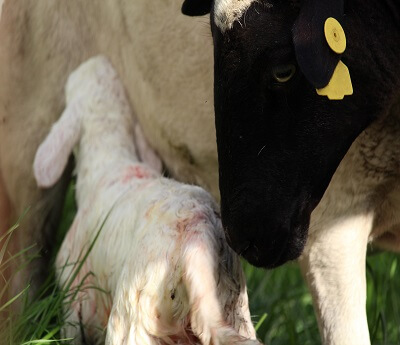
It is common to wean kids and lambs when they are about 3 months old. Buck or ram and dow or ewe should be separated to prevent unwanted pregnancies. If grain is being fed to the does or ewes, it should be reduced five days prior to weaning, to help prevent mastitis (infection in the udder)
Nutrition and Feeding
The nutritional needs of goats and sheep vary according to weight, age and stage of growth and/or breeding cycle. They can be met by a variety of feedstuffs and feeding programmes. There is no perfect feed or feeding programme. Ration formulations are usually based upon a combination of the animal's nutritional needs, feedstuff, availability, chemical composition of feedstuff, age of animal, animal type (meat, milk and wool/fur) and cost of feedstuff.
Sheep and goats require water, protein, energy, minerals and vitamins in their diets. Water is by far the most important nutrient. Animals can go for a long time without food but not without water. Energy is usually the most limiting ingredient in small rumainant rations while protein is the most expensive. Calcium and phosphorus are the two most important minerals to be included in the diets. The ratio of calcium to phosphorus in the diet should be at least 2:1 to prevent urinary calculi, the formation of kidney stones in the bladder of male goats and sheep. Selenium is another important minerals. Goats and sheep require vitamins A, D, E and K in their diets, but synthesize the B vitamins in their rumens.
Pasture should comprise the larger portion of the diets of goats and sheep. When fresh forage such as grass, legumes, fodder crops and browse trees cannot meet the nutritional needs, supplemental feeding such as concentrate may be necessary.

Supplements should only be fed to the point where they support profitable levels of production. It is questionable as to whether goats can be grain fed profitably to the extent that other livestock can. The amount of pasture needed to support ewe and doe with their offspring will differ, depending on the quality of pasture and the management systems.
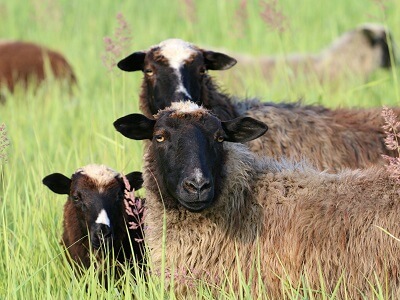
Health Management
Goats experience similar health problems as sheep. Adult goats and sheep should be vaccinated annually for enterotoxemia (overeating disease), Peste des petits ruminants (PPR) and tetanus. Does and ewes should be vaccinated prior to kidding and lambing so that the kids (baby goats) and lambs (baby sheep) receive temporary immunity through the colostrum. Kids and lambs should receive their first vaccination at approximately 30 and 60 days of age. Vaccines against other diseases will depend on the incidence of the diseases in the herd. A large animal veterinary or state animal health laboratory can help diagnose disease problems in the herd.
The most common health problem affecting goats and sheep is internal parasites. Essentially, all healthy goats and sheep also have worms present in their guts. Effective parasite control is best achieved through a combination of strategic deworming and pasture management. Frequent anthelmintic treatments, without regard for pasture conditions, are costly and may lead to a false sense of security. Moreover, frequent exposure to anthelmintics causes worms to become resistant to the drugs.
Ewes and does should be dewormed prior to or shortly after lambing or kidding. Anti-parasitic drugs are available in many forms of administration (oral/drench, paste, gel, bolus, injection, pour-on and feed additive). Oral drenching is the recommended method for deworming goats. Oral products clear the animal's system faster and are more effective than other methods
Marketing of Goat and Sheep
A marketing channel for sheep and goats describes the movement of the product from the site of production to the place of final consumption. It may include transportation, handling and storage, ownership transfers, processing, wholesale distribution, retailing etc. Farm-raised small ruminants may be marketed on-farm for slaughter and consumption. Alternatively, goats and sheep may be sold to a second owner who then slaughters them and consumes the carcass and the offal. In many markets, small ruminants are sold at all times of the year for various reasons including income, festivals, religious purpose, gifts, consumption and ceremonies
Nigeria is a major hub of animal product consumption in West Africa. It is also one of the largest livestock-raising countries in the region. Meeting the ever-increasing domestic demand and access to these flourishing markets are major economic stakes for Nigeria and for the neighbouring Sahel countries that raise livestock.


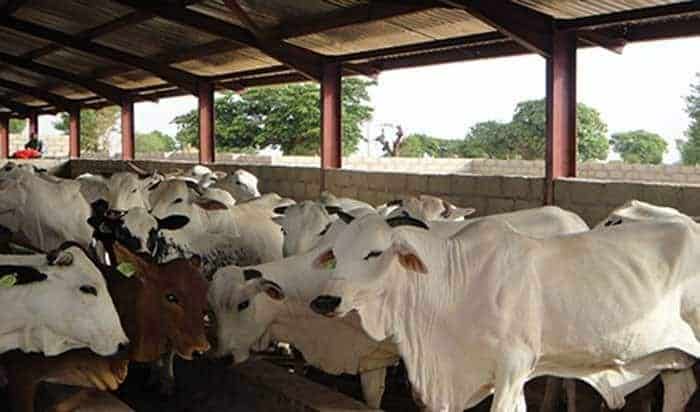
No comments:
Post a Comment
Thank you for your feedback